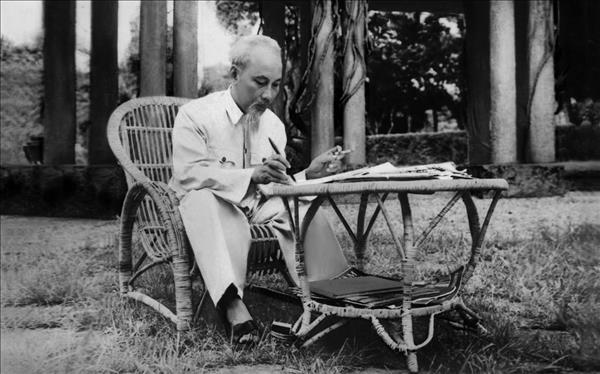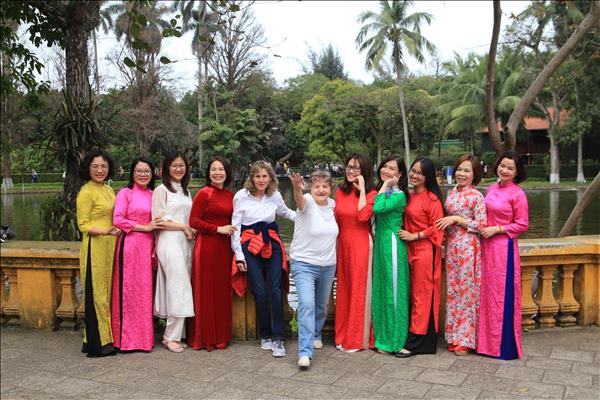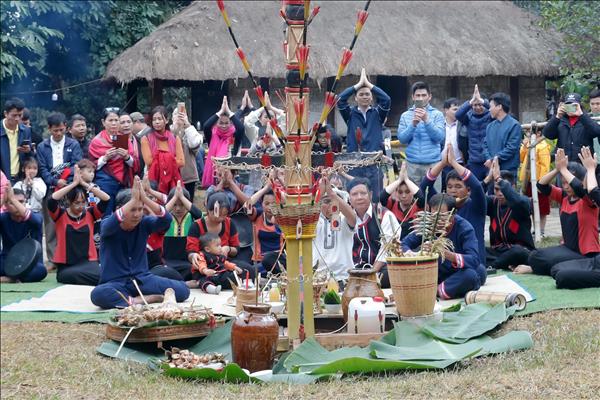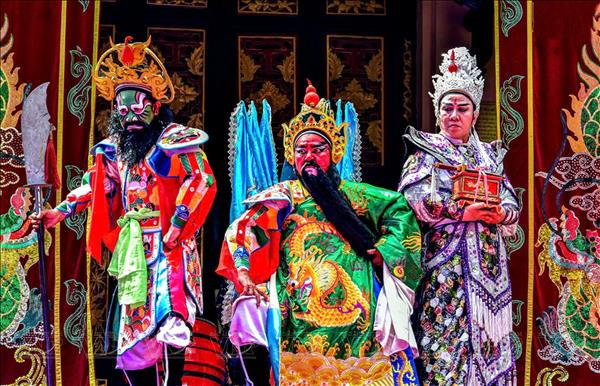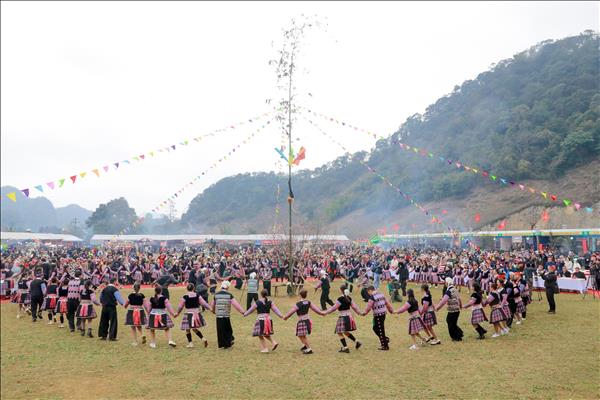The return of the green forests
As assessed by the world’s scientists, Vietnam is one of five countries to be most affected by climate change, particularly rising sea level.
According to the statistics of the Ministry of Agriculture and Rural Development, in 1943 Vietnam had over 400,000ha of mangrove forests. However, due to the aftermath of the destructive war and the excessive exploitation of forests, the area of mangrove forests reduced to over 155,000ha in 2006.
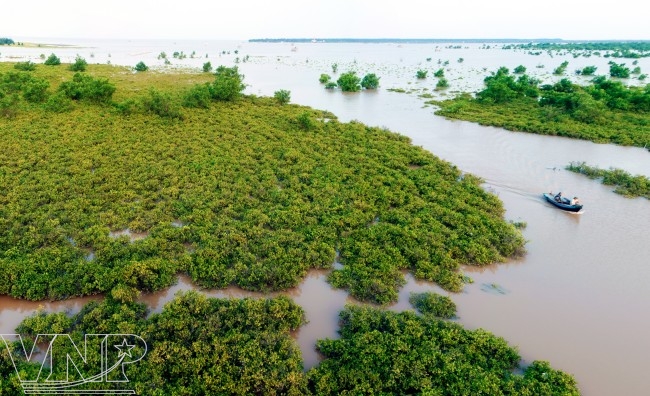 A part of the "green wall" at Ba Lat estuary, Xuan Thuy National Park, Nam Dinh Province. Photo: Viet Cuong 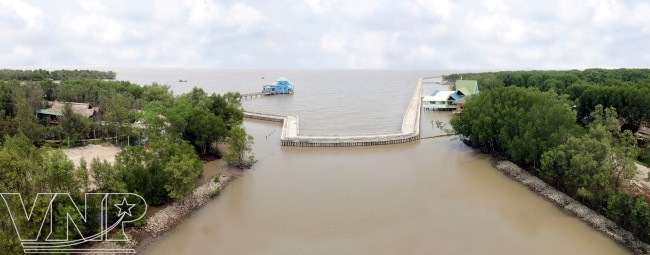 Mangrove forests in Ca Mau belongs to Ca Mau Biosphere Reserve. Photo: Le Minh 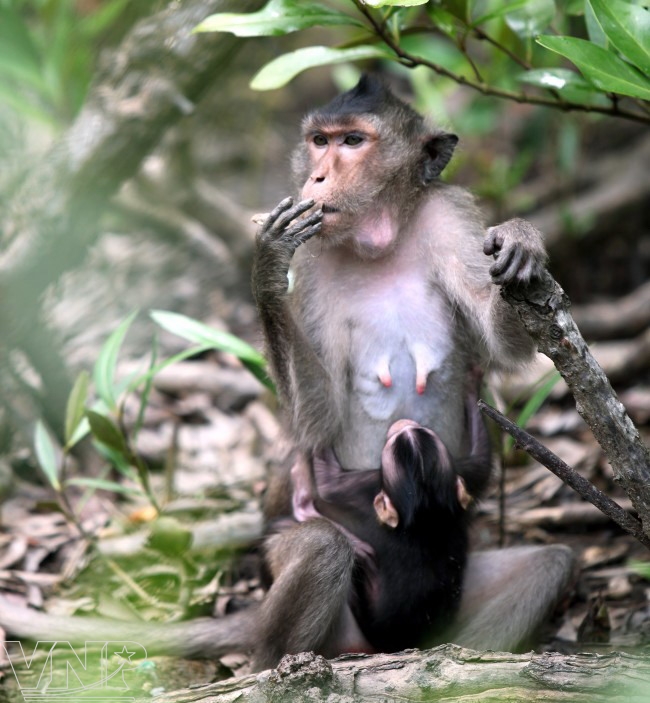 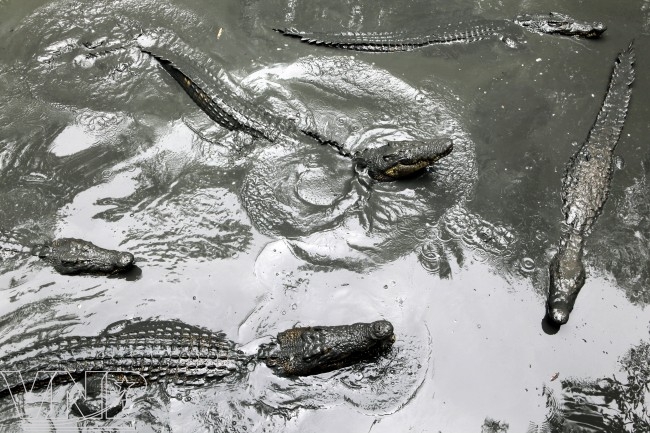 Monkeys and crocodiles in Can Gio mangrove forests. Photo: Le Minh 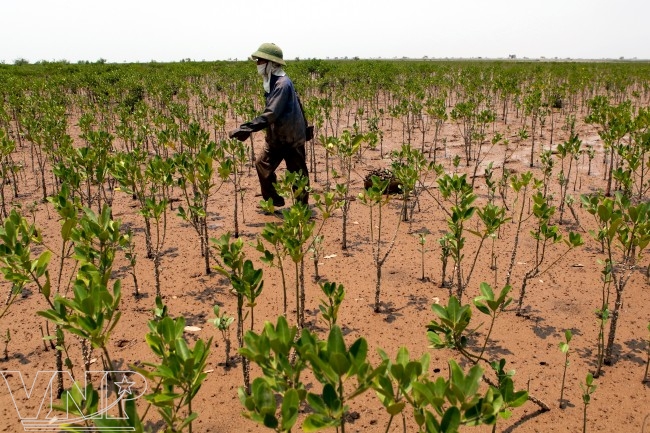 Part of the forests that are naturally regenerated in Xuan Thuy National Park. Photo: Viet Cuong 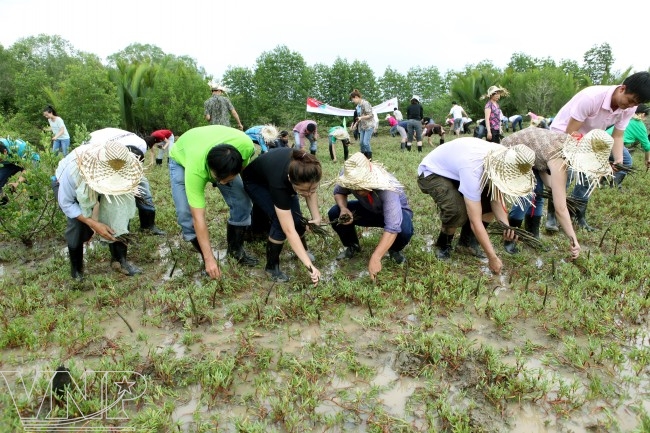 Planting mangrove trees in Can Gio. Photo: Le Minh 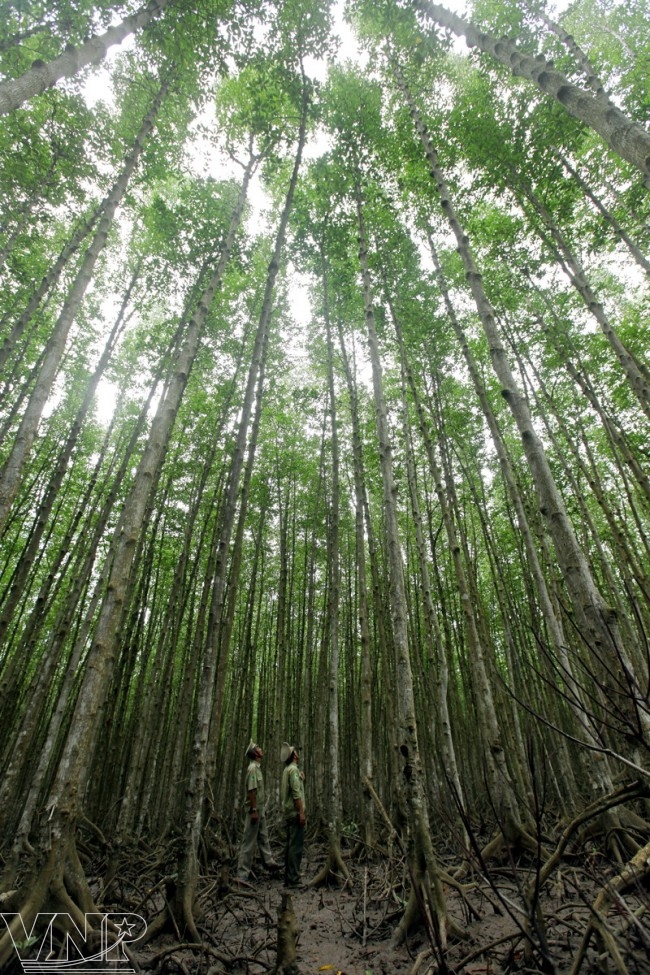 Forest guards patrol to protect Can Gio mangrove forests. Photo: Le Minh |
| «... According to the experts, a mangrove forest with a width of 100m can reduce 50% of the height of the tidal waves and 50% of the energy of the waves. It can also mitigate or disperse 15m-high Tsunami waves. |
In fact, the degradation of many mangrove forests is an alarming problem in Vietnam. For example, in the North, Xuan Thuy National Park (in Giao Thuy District, Nam Dinh Province) had an area of over 7,000ha, but in the 1990s, 30% of the mangrove forest area was reserved for extensive aquaculture to develop the economy, resulting in a decrease of the forest. In the South, the Can Gio mangrove forests which are also known as the Sac forests (in Can Gio District, Ho Chi Minh City) were almost completely destroyed by Agent Orange from the United States during the war and became a “salt desert”. According to American scientists it will take 100 years to revive “this desert” to its original condition. In this situation, the Vietnamese Government has devised a national strategy on climate change with a focus on restoring and developing the coastal mangrove forests.
Xuan Thuy National Park in the Red River Delta Biosphere Reserve is the first mangrove forest in Vietnam which has been recognized by the Ramsar Convention. Thanks to Programme 327, a national programme on protecting and restoring the protective forests and special-use forests, the establishment of Xuan Thuy Wetland Nature Reserve and the funding from the Danish Red Cross Mangrove Forest Plantation Project, since 1997, over 1,500ha of mangrove forests have been planted. Now, these forests are growing well, especially those in Ba Lat Estuary. They serve as a “green wall” against sea waves, reducing the risk of a sea dike break.
Le Viet Cach, Director of Xuan Thuy National Park, said: “Besides restoring the mangrove forests, the local authorities and Xuan Thuy National Park Management Board attach great importance to enhancing the people’s awareness to protect the forests in diverse forms. These activities have helped the people learn how to preserve and exploit the precious wetland resources at the coastal estuaries in a sustainable way.”
In 1978, less than three years after the South was completely liberated (April 30, 1975), Ho Chi Minh City established Duyen Hai Plantation with a determination to restore the Can Gio mangrove forest ecosystem. After 34 years, millions of avicennia and mangrove trees in Can Gio have grown into green forests which stretch wide and far.
After more than a one hour boat ride, we arrived at Division III of Can Gio Protective Forest Management Board where the Division Management Committee was holding a monthly meeting on forest protection with the local people. Phan Van Hung, a 57-year-old man in An Loc Hamlet, Tam Thon Hiep Commune, whose family was one of the first 10 households participating in the pilot programme on planting and protecting the Can Gio forests in 1991, said: “In 1991, I and the residents here had to eat forest vegetables and live with mosquitoes, gad-flies, birds and animals to plant forests. After more than 20 years, we have a stretching carpet of green forests like this.”
This green carpet is over 37,000ha of Can Gio mangrove forests. Looking east from a watch tower we saw that the sea has been encroached upon by green avicennia and mangrove trees which are growing strong to face the sea waves.
Conservation and sustainable development of the mangrove forests
In February 2012, the Government issued a decision on an experimental sharing of benefits in the management, protection and sustainable development of the special-use forests, including the mangrove forests. Under this decision, the people are given the right to exploit and use the resources, grow plants and raise animals in the special-use forest area as regulated. At the same time, they also have an obligation to protect, preserve and develop this special resource.
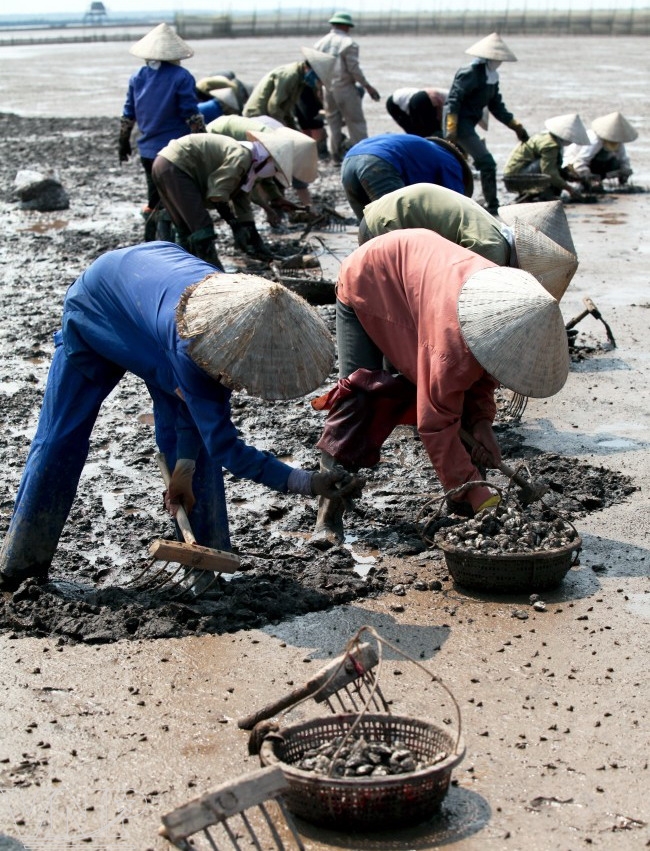 Digging clams at the buffer zone of Xuan Thuy National Park. Photo: Thong Thien 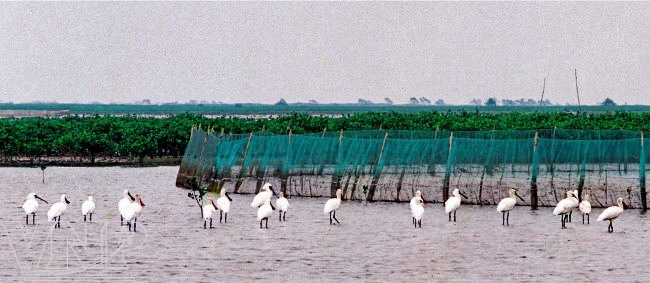 Co thia (Black-faced Spoonbills) are in danger of extinction, reside in Xuan Thuy mangrove forests. Photo: Trang Linh |
| «... In June 2012, the Ministry of Agriculture and Rural Development approved a technical cooperation programme on integrated protection of coastal areas and mangrove forests to adapt to climate change in the Cuu Long River Delta provinces. The programme has a total investment capital of 21 million Euros, of which 18.35 million Euros is non-refundable aid from the German and Australian Governments and the remaining is reciprocal capital. |
At present, the mangrove forests in Xuan Thuy National Park is recovering and growing strong, creating favourable conditions for a large amount of shrimp, crabs, fish and other aquatic species from the sea to live and develop. Everyday, over 1,000 residents in Giao Thuy, Giao An and Giao Hai Communes go to this area to catch shrimp, crabs and fish to earn their living. One afternoon, we met a group of women who were returning home from the forest. Nguyen Thi Dien, a woman in Giao Thuy showed us two crabs of nearly one kilogram she had just caught and said: “These crabs are sold for about 300,000 VND, enough for my family’s expenses. Since the policies of the State and the directions of the Forest Management Board have been enforced, our life has become more comfortable due to the exploitation and protection of the mangrove forests.”
Unlike in Xuan Thuy National Park, the residents in the Can Gio mangrove forest area in Ho Chi Minh City have benefited from the forests in a different way. According to the Can Gio Protective Forest Management Board, 141 local households and 14 units of the State have been allotted to plant and preserve 37,000ha of forests. On average, each household grows, cares for and protects about 70ha with a pay of 725,000VND/ha/year. Thus, each household involved in the forest protection receives about 50 million VND from the fund for forest planting and protection. The forest keepers also have a retirement pension and have the right to transfer their contracts to their children after 30 years of doing the assigned work.
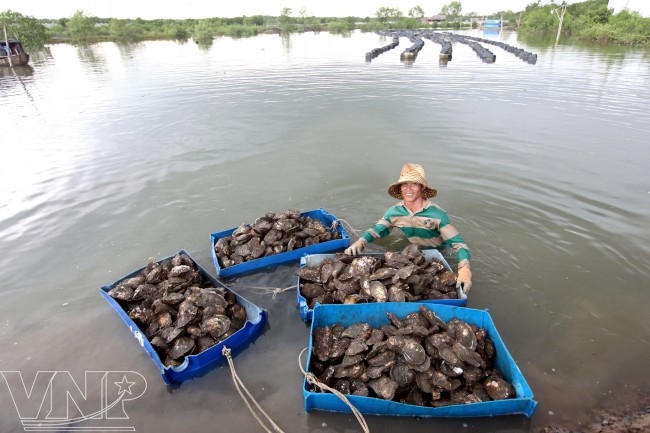
Oyster cultivation at Can Gio mangrove forests. Photo: Le Minh
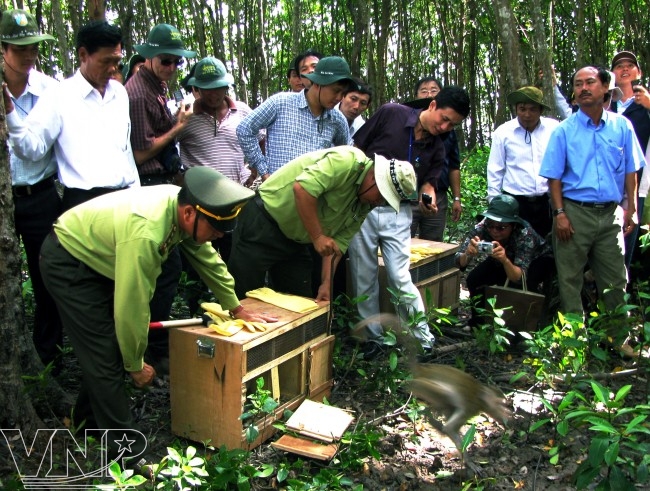
Setting free monkeys (Macaca fascicularis) to protect the bio-diversity at Ca Mau Biosphere Reserve.
Photo: Nguyen Vu Thanh Dat.
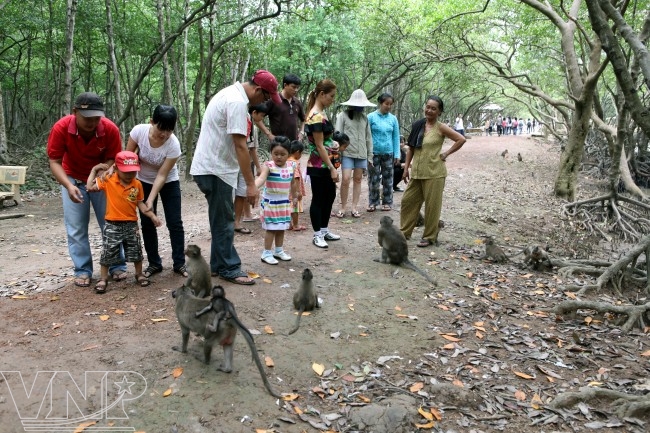
Visiting the monkey island in Can Gio mangrove forests. Photo: Le Minh
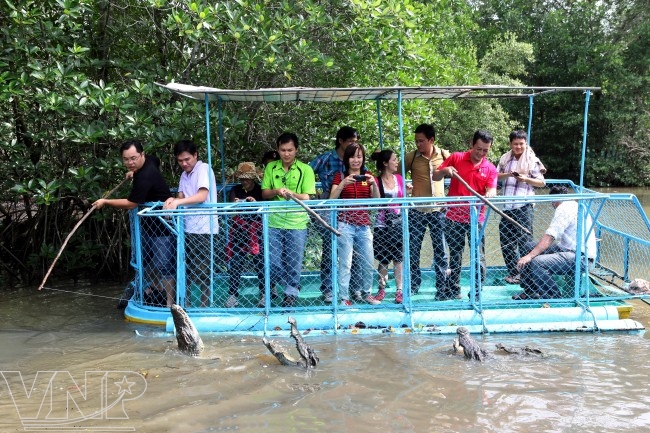
Visiting the crocodile raising area at Vam Sat Ecological Tourist Area, Can Gio. Photo: Le Minh
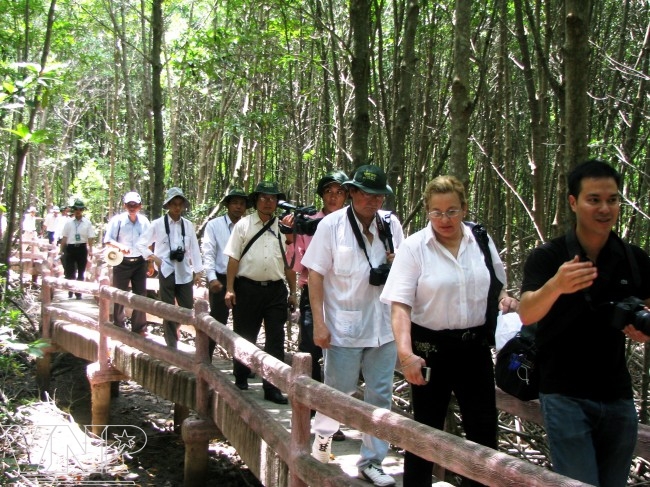
Tourists visit Can Gio mangrove forests. Photo: Le Minh
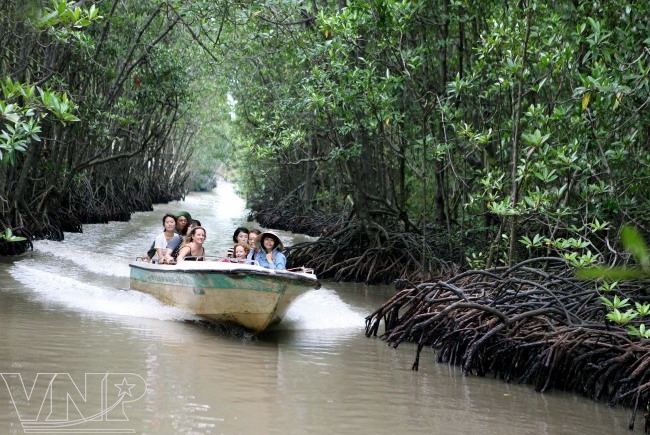
Visiting Can Gio mangrove forests by canoe. Photo: Le Minh
Thanks to the tireless efforts of the authorities and people in restoring and protecting the forests, in 2000 UNESCO recognized Can Gio mangrove forests as a World’s Biosphere Reserve and the first biosphere reserve in Vietnam. Now, Can Gio mangrove forests have actually become a “green lung” for over seven million residents in Ho Chi Minh City. They serves as a giant natural filter to clean the air and the waste water which comes from the industrial zones near the upper Dong Nai and Sai Gon Rivers before flowing into the East Sea. Moreover, Can Gio has become a fascinating tourist site which attracts about 500,000 tourists a year to visit its famous beautiful places and relics, such as Vam Sat Tourist Area, Can Gio Biosphere Reserve, the historical area of Rung Sac War Zone, Lam Vien (Monkey Island) and the April 30th Beach.
The successful restoration of a system of mangrove forests, including the mangrove forests in Xuan Thuy and Can Gio has helped protect the ecosystem of the coastal forests, enabling the people to stabilize their life based on the forest resources. More importantly, it has created a firm “green wall” to cope with climate change and the rising sea level which are threatening the lives of tens of millions of residents in the coastal areas.
Story: Thong Thien - Nguyen Vu Thanh Dat - Photos: Le Minh -
Thong Thien - Viet Cuong - Trang Linh - Nguyen Vu Thanh Dat
Story: Thong Thien - Nguyen Vu Thanh Dat - Photos: Le Minh - Thong Thien - Viet Cuong - Trang Linh - Nguyen Vu Thanh Dat


